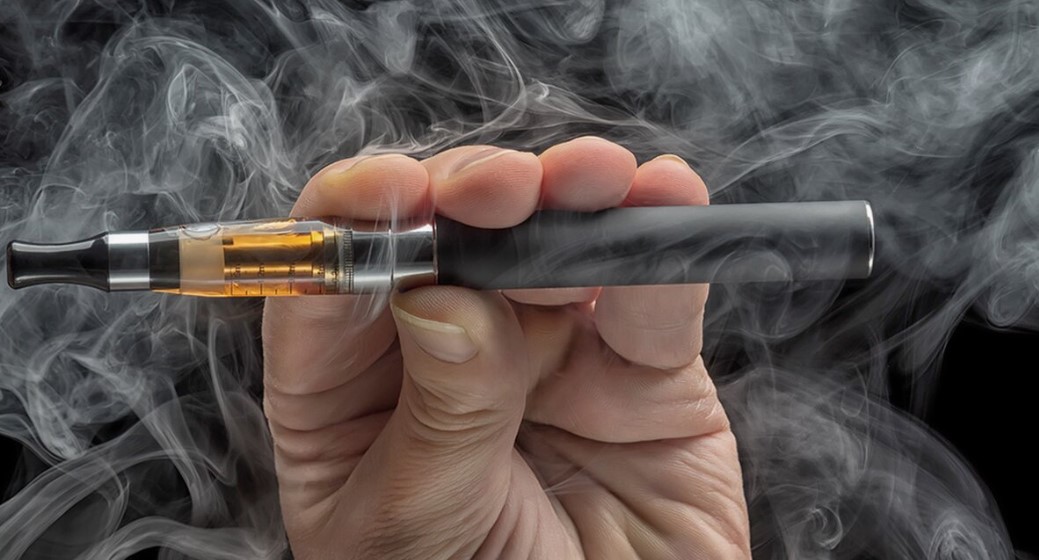Philip Morris USA, a division of the Altria Group, stands as a towering presence in the global tobacco industry. With roots that trace back to the early 20th century, the company has evolved from a modest operation into a formidable market leader. This transformation is marked by a series of fascinating milestones, strategic innovations, and bold marketing campaigns that have not only shaped the company’s destiny but also left an indelible mark on the broader tobacco industry. The story of Philip Morris USA, much like the evolution of e-cigarette retailers such as the Vape Here Store, is a compelling narrative of resilience, adaptation, and corporate ingenuity.
The Early Years: From Small Beginnings to Major Acquisition
Philip Morris & Co. Ltd. was officially incorporated in New York in 1902. The company began as a relatively small player in the American tobacco market, with its operations focused on niche products rather than the mass-market cigarettes we associate with the brand today. However, the turning point in the company’s history came in 1919 when George J. Whelan, along with his partners Reuben M. Ellis and Leonard B. McKitterick, acquired the American operations of Philip Morris. This acquisition led to the formation of Philip Morris & Co. Ltd., Inc., which became the foundation for the company’s future growth and dominance.
This early period in Philip Morris’s history was characterized by a focus on establishing a foothold in the competitive American market, which was dominated by larger, more established players. The company initially struggled to compete, but the strategic vision of its new owners began to steer it in a more aggressive and ambitious direction. This vision would eventually lead to Philip Morris becoming a household name in the United States.

Innovation at Its Core: Flip-Top Boxes and Filters
One of the key factors behind Philip Morris’s rise to prominence was its commitment to innovation. Throughout its history, the company has consistently introduced new products and technologies that have set it apart from its competitors. Two of the most significant innovations introduced by Philip Morris in the 1950s were the flip-top box and the widespread adoption of cigarette filters.
The flip-top box was a revolutionary packaging innovation that had a profound impact on the tobacco industry. Before its introduction, cigarettes were typically sold in soft packs that were prone to crushing and did little to protect the freshness of the product. The flip-top box, with its hard, protective casing, not only kept cigarettes fresh but also made them more portable and durable. This innovation was quickly adopted across the industry and became the standard packaging for cigarettes worldwide. It also had the added benefit of providing a larger surface area for branding and advertising, which Philip Morris leveraged to great effect.
Around the same time, the company also began promoting filtered cigarettes, which were increasingly seen as a safer alternative to unfiltered ones. This shift was partly in response to emerging scientific evidence linking smoking to lung cancer, which prompted growing health concerns among the public. Initially, filtered cigarettes were marketed primarily to women, as they were perceived as less harsh and more refined. However, Philip Morris recognized the need to appeal to male smokers as well, leading to a significant shift in its marketing strategy.
Marlboro: A Feminine Beginning and the Birth of the Marlboro Man
One of the most intriguing chapters in Philip Morris’s history is the evolution of its Marlboro brand. Today, Marlboro is synonymous with rugged masculinity, largely due to the iconic Marlboro Man advertising campaign. However, the brand’s origins are quite different. Marlboro was originally introduced in the 1920s as a cigarette for women, with the slogan “Soft as May.” The cigarettes were designed with a red band around the filter to hide lipstick stains, further emphasizing their appeal to female consumers.
This feminine positioning persisted until the 1950s, when the health risks associated with smoking began to garner significant attention. The growing body of research linking smoking to lung cancer led to a surge in demand for filtered cigarettes, which were perceived as a healthier option. However, these cigarettes were still largely associated with women, and many men were reluctant to adopt them.
In response to this challenge, Philip Morris undertook a bold rebranding effort for Marlboro. The company hired Leo Burnett, a renowned advertising executive, to reposition Marlboro as a cigarette for men. Burnett’s solution was to create the Marlboro Man, a rugged, cowboy-like figure who embodied the ideal of masculine independence and strength. The Marlboro Man became one of the most successful and enduring advertising icons in history, transforming Marlboro into the world’s best-selling cigarette brand.
This rebranding was not just a marketing success; it also marked a significant cultural shift in the way cigarettes were perceived. The Marlboro Man tapped into deep-seated notions of American identity, particularly the ideal of the frontier cowboy, which resonated strongly with male consumers. The success of this campaign helped solidify Philip Morris’s dominance in the U.S. cigarette market and established Marlboro as a global brand.
Dominance in the U.S. Market
By 1972, Philip Morris had become the leading cigarette manufacturer in the United States by sales volume. This achievement was the result of a combination of innovative products, strategic marketing, and a keen understanding of consumer behavior. The company’s portfolio of brands, including Marlboro, Virginia Slims, Benson & Hedges, Merit, and Parliament, dominated the market, catering to a wide range of consumer preferences.
Philip Morris’s success in the U.S. market was also facilitated by its aggressive marketing strategies. The company was one of the first to embrace television advertising in the 1950s, and its commercials became a staple of American popular culture. The company also invested heavily in sponsorships, particularly in sports, which helped to further increase its visibility and appeal.
However, this dominance came with significant challenges. As the leading tobacco company in the United States, Philip Morris was subject to intense scrutiny from public health advocates, regulators, and the general public. The company faced numerous lawsuits and regulatory challenges, particularly as the health risks associated with smoking became more widely known. In response, Philip Morris adopted a more defensive posture, focusing on harm reduction and the development of less harmful products.
Another significant challenge came in the form of heavy taxation. Tobacco companies like Philip Morris are subject to some of the highest taxes in the world, often referred to as “sin taxes.” In 2013, for example, Philip Morris paid a staggering $48.8 billion in taxes out of its $80 billion in total revenues, which equates to about 60% of its earnings. This means that for every 20 packs of cigarettes sold by Philip Morris, the government effectively collects taxes on 12 of them. Despite this heavy tax burden, the company has managed to remain profitable, a testament to its efficient operations and strong brand loyalty.
A Profitable Investment Despite Challenges
Given the heavy regulatory and tax burdens faced by tobacco companies, it might seem surprising that Philip Morris has consistently been a profitable investment. However, the company has a long history of delivering strong financial performance, with net and operating margins ranging from 20 to 40 percent. This profitability is due in part to the company’s ability to pass on costs to consumers through price increases, as well as its focus on premium brands like Marlboro, which command higher prices and margins.
As of August 2016, Philip Morris’s shares offered a dividend yield of 4.09%, and the company had increased its dividend every year for the previous eight years. This steady stream of dividend payments has made Philip Morris a favorite among income-seeking investors. The company’s earnings have doubled roughly every 10 years since 1985, and its shares have more than doubled since its 2008 spin-off from parent company Altria Group Inc.
This financial success has been achieved despite the many challenges faced by the tobacco industry, including declining smoking rates, increasing regulation, and growing public health concerns. Philip Morris’s ability to navigate these challenges and continue delivering strong returns to shareholders is a testament to the company’s strategic acumen and operational efficiency.

Embracing the Future: E-Cigarettes and Beyond
As the traditional cigarette market faces increasing pressures from regulatory authorities, changing consumer habits, and growing health awareness, Philip Morris has been proactive in exploring new avenues for growth. The company recognized early on that the future of the tobacco industry would likely involve a shift away from combustible cigarettes toward alternative nicotine delivery systems.
In 2000, Philip Morris considered purchasing the rights to e-cigarette technology, but ultimately decided against it due to the high costs involved. However, the company did not abandon the idea of entering the e-cigarette market altogether. In the following years, Philip Morris launched its own e-cigarette brands, such as MarkTen, and introduced iQOS, a heat-not-burn tobacco product that represents a significant innovation in harm reduction.
The iQOS system works by heating tobacco to a temperature high enough to release nicotine-containing vapor but low enough to avoid combustion, thereby reducing the levels of harmful chemicals typically produced by burning tobacco. The product has been marketed as a less harmful alternative to traditional cigarettes and has gained traction in several international markets. Initial launches in countries like Japan, Spain, and Israel have shown promising results, with many smokers switching from conventional cigarettes to iQOS.
In addition to iQOS, Philip Morris has also ventured into other unconventional products. In 2015, the company launched Solaris, an e-cigarette product licensed from Altria. Solaris is a battery-powered device that produces a nicotine-containing vapor, similar to other e-cigarettes on the market. The product was initially launched in Spain and Israel, where it has shown some encouraging signs of success.
Philip Morris’s foray into the e-cigarette market underscores the company’s commitment to transitioning beyond traditional cigarettes and embracing the future of nicotine delivery. The company has publicly stated its ambition to achieve a “smoke-free future,” where the majority of its revenue comes from reduced-risk products like iQOS and other nicotine alternatives. This strategic shift reflects the company’s recognition of the changing landscape of the tobacco industry and its desire to remain relevant in a world where smoking rates are declining.
Global Reach: Philip Morris in the UAE
Philip Morris’s influence extends far beyond the borders of the United States. The company’s products are sold in more than 180 countries, making it a truly global enterprise. One notable example of its international reach is in the United Arab Emirates (UAE), where Philip Morris’s iQOS e-cigarette devices and accessories are available at the Vape Here Store. This retail outlet, with locations in Abu Dhabi and Dubai, also offers a comprehensive online platform where customers can conveniently purchase these products at competitive prices. For instance, the IQOS ILUMA PRIME SYSTEM, a premium version of the iQOS device, is available for just 400.00 dirhams, highlighting the brand’s accessibility in international markets.
The availability of Philip Morris products in markets like the UAE reflects the company’s global strategy of expanding its presence in regions where smoking rates remain high, and where consumers are increasingly open to exploring alternative nicotine products. The company’s success in these markets will be crucial to its long-term growth, particularly as smoking rates in more developed markets continue to decline.
Corporate Responsibility and Public Perception
Throughout its history, Philip Morris has faced significant challenges related to corporate responsibility and public perception. As one of the world’s largest tobacco companies, it has been at the center of debates over smoking’s health impacts, youth smoking prevention, and the ethics of tobacco marketing. The company has faced numerous lawsuits and has been subject to stringent regulations aimed at curbing tobacco use and protecting public health.
In response to these challenges, Philip Morris has taken steps to improve its corporate responsibility practices. The company has implemented extensive marketing restrictions, including measures to prevent youth smoking, and has committed to transparency in its operations. Additionally, Philip Morris has invested heavily in scientific research aimed at developing and promoting reduced-risk products like iQOS.
The company’s efforts to transition to a “smoke-free future” are a key part of its corporate responsibility strategy. By focusing on harm reduction and offering smokers less harmful alternatives to traditional cigarettes, Philip Morris aims to address some of the public health concerns associated with smoking while also ensuring the company’s long-term sustainability.
However, these efforts have not been without controversy. Critics argue that Philip Morris’s promotion of reduced-risk products may serve to maintain or even increase nicotine addiction among consumers, particularly in markets where e-cigarettes are not as heavily regulated. The company’s ongoing challenge will be to balance its business interests with its responsibilities to public health and to navigate the complex regulatory landscape that governs the tobacco and nicotine industries.
Conclusion
The story of Philip Morris USA is one of remarkable transformation, innovation, and strategic foresight. From its early days as a small tobacco company in New York to its current status as a global leader in nicotine products, Philip Morris has consistently demonstrated its ability to adapt to changing market conditions and consumer preferences. The company’s journey is marked by significant milestones, such as the introduction of the flip-top box, the rebranding of Marlboro, and its foray into e-cigarettes, all of which have contributed to its enduring success.
As Philip Morris looks to the future, its commitment to innovation and its ambition to achieve a smoke-free world will be key drivers of its continued relevance and growth. The company’s ability to navigate the challenges of a declining cigarette market, increasing regulation, and shifting public attitudes toward smoking will determine its place in the evolving landscape of the global tobacco industry. Whether through the development of new products, the expansion into international markets, or its efforts to promote corporate responsibility, Philip Morris remains a fascinating case study in corporate resilience and ingenuity.

Skier, maker, band member, Eames fan and front-end developer. Acting on the pillars of art and elegance to create more than just a logo, but a feeling. Check me out on Dribbble or Medium. Lover of tropical swifts. My mission is to show people that IQOS is an ingenious invention and HEETS DUBAI has pleasant tastes.

